In the past there has only been one Golden Rule for backcountry skiing: There are no friends on powder days.
This is always said tongue-in-cheek and implies that powder days should be feeding frenzies where it’s every man for himself, but with the stratospheric rise in backcountry popularity, just the opposite is now true: There’s nothing BUT friends on powder days. Or at least there should be.
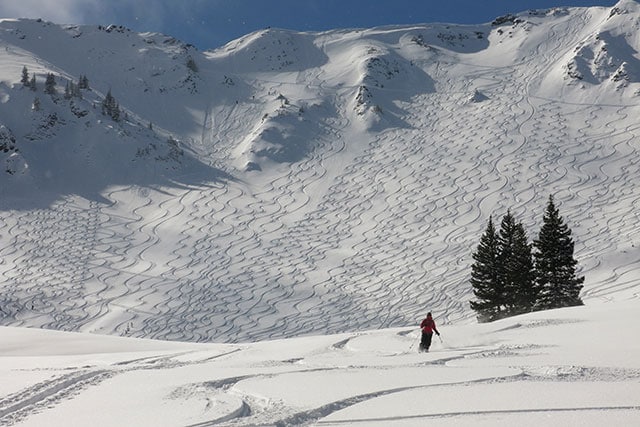
What used to take a week is now tracked out in a day.
In popular areas with easy access like the Central Wasatch Mountains, Teton Pass or Tahoe the rise in backcountry skier numbers is a prime topic of conversation at most skier parties. In 1990 backcountry skiing was all about skinny skis, 3-pin bindings, hugging trees, eating granola and solitude. Twenty-five years later it has morphed into heavy metal touring gear, feature films, advertising, the rise of the internet skier and many, many more people.
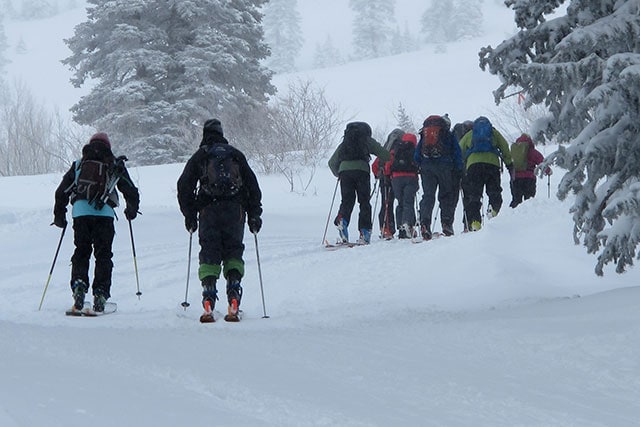
We were all beginners at some point…
This isn’t necessarily all bad and even has some hidden benefits. Two years ago I witnessed an avalanche burial and by the time I got there two minutes later, twelve other people were already digging, including three physicians. The victims was pulled out and the entire party dispersed by the time a rescue helicopter showed up twenty minutes later only to find an empty hole. Aside from having to look a bit harder for untracked snow, the real implication of more people in the backcountry is that it is no longer a small tribe of wayward rebels, but is now a booming community in need of some social constraints. Drew Hardesty of the Utah Avalanche Center says, “What used to be freedom of the hills has now become anarchy in the backcountry.” Knowingly or not, people’s actions in the backcountry are endangering both themselves and others to the point that government agencies are starting to grumble about closing areas in the name of public safety. As a community, self-policing is always preferred over government intervention, and with that in mind, here are a few suggested amendments to the Golden Rule…
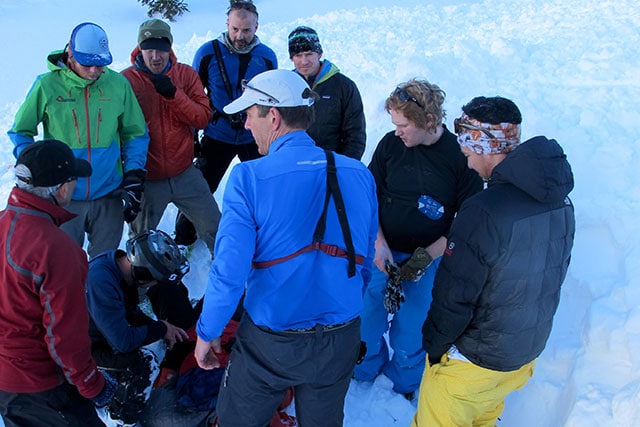
From full burial to breathing in three minutes flat. Sometimes it is good to have a lot of friends in the backcountry.
Chute Booting
Most people boot or skin up couloirs before skiing back down them. In crowded areas this causes problems as the top person is put in a position of either waiting for subsequent parties to catch up, or skiing down on top of them. If the wait is ten minutes that’s one thing, but in long couloirs subsequent parties may be hours and thousands of feet below you. If you trigger a slide the lower parties will be in strike zone, not to mention there are often parties below the parties below the parties.
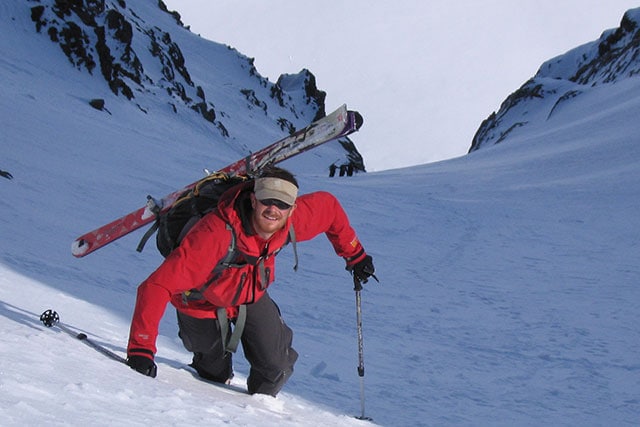
Booting up with others below.
If you are the top party and it is looking like it might be an all-day wait before you can ski with nobody below you, there are still a few options. First, try yelling to the parties below to tell them that you are coming down. If they have any brains they will pull off to the side in a safe spot as soon as possible. Skiing down on top of people is an avalanche faux pax, but there is only so much you can do about it. If doesn’t work, try skirting around the top of the couloir (generally the most dangerous, windloaded area) and finding a lower entry which may be less avalanche prone. After that, try breaking up your ski shots into smaller pitches going from safe spot to safe spot rather than ripping a whole line all at once. If you are with a group of people, try leap-frogging your way down in sections with everyone spreading out at different safe spots instead of ganging up together.
If you decide you want to follow a skinner or booter up a couloir with the trailbreaker still in sight, at least be aware of the situation. Is the couloir being used to access something else, or is the group ahead most likely going to ski back down? If the people above you are going to ski down and you really want to be safe, think about breaking a separate trail way off to the side if it isn’t there already.
Cornice Stomping
Along with ski cuts, chopping and dropping cornices is a time-honored way to test a slope’s stability. Known as “the bombs of the backcountry,” a hefty cornice dropped right into a loaded starting zone is an excellent way to test snow stability, but the catch is, you never truly know if it is going to go, and if so, how big it will be. In crowded terrain, it’s better to err on the side of caution and assume that it is going to pull out wall-to-wall, which means expanding your safe zone below. In times of high or extreme avalanche danger when you probably shouldn’t be skiing steep lines like that anyway, consider letting sleeping cornices be. Snow will eventually stabilize and triggering artificial avalanches just creates a thinner and thus weaker snowpack for the future.
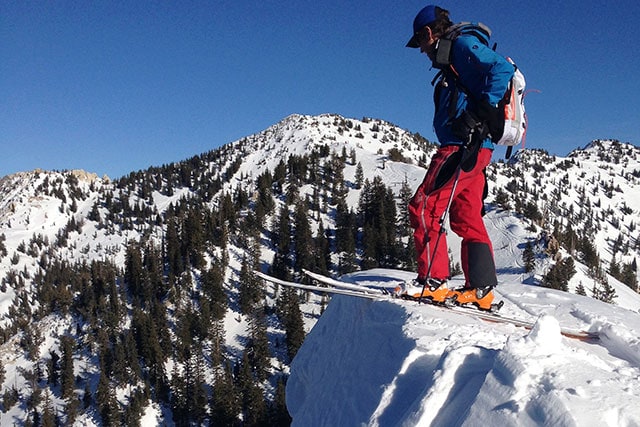
Before stomping a cornice, check the runout path and consider the chances of a large, sympathetic avalanche.
Safe Skinning
Setting a safe skin track is a winning option all around. For the setter, it means avoiding avalanche danger from above by sticking to ridgelines, watching your slope angles, swinging wide around obvious slide paths, and working the trees or islands of safety. From the skier’s perspective, if a track is set right there shouldn’t be anyone below you, or if there is, there may be other descent options. A safe skin track protects you while climbing from avalanches and also from people skiing down from above.
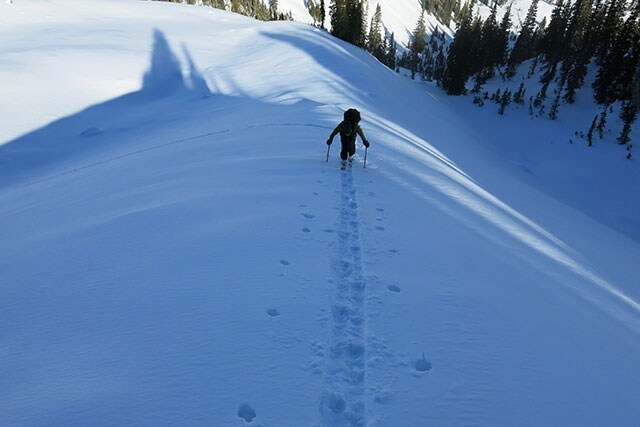
For both your own safety and that of others, always try to stick to the high ground, like ridges, when ascending.
Whacked-out skin tracks that go straight up avalanche paths or slice through starting zones are increasingly common. In the backcountry, the fastest way from A to B is often not a straight line, but a circuitous and less obvious route. Breaking trail right up the center of an avalanche bowl is dangerous by itself, but doubly so if there are skiers come down the bowl as well. Avoid the temptation and frustration of following bad, unsafe skin tracks by breaking a new one.
Doing It for the Children
As far as I know, nobody has ever triggered an avalanche which took out a bus full of kids in the Wasatch, but with more people in the backcountry and the mountains, it’s time to start thinking about the possibility. Does this slope threaten the road? Am I interfering with avalanche control work? Am I endangering private property? Am I endangering people or employees at the ski resorts? Much of the land we recreate on is public property and we have a right to be there, but if there was an accident and push came to shove, it is very conceivable that backcountry areas could be closed in the name of public safety. A better alternative is for the backcountry community to be proactive and police ourselves. At the very least, don’t piss off the DOT guys.

A traffic jam in the mountains is bad enough, but triggering an avalanche on top of it is even worse.
Helpful Hints
Backcountry skiing is a nuanced sport that can take years to learn and it helps to have good mentors. I’ll often make suggestions if I see someone struggling on the skin track which usually earns me the verbal equivalent of an extended middle finger. One of my favorites was a British woman who told me “If I need some help, I’ll ask my guide.” But I’m a slow learner and keep at it, especially when it comes to newcomers and avalanche safety. That said, it is a fine line between offering a suggestion and being a prima donna backcountry jerk. For me, the deciding factor is whether the skiers are doing something that endangers others or merely endangering themselves. If it is endangering others, I might say something like, “Perhaps you should wait until those people are gone before stomping that cornice.” But if they are merely endangering themselves, I’ll just take a photo. I don’t like telling people what to do in the backcountry or conversely being told what to do, but as the backcountry gets more crowded, communications become more important.
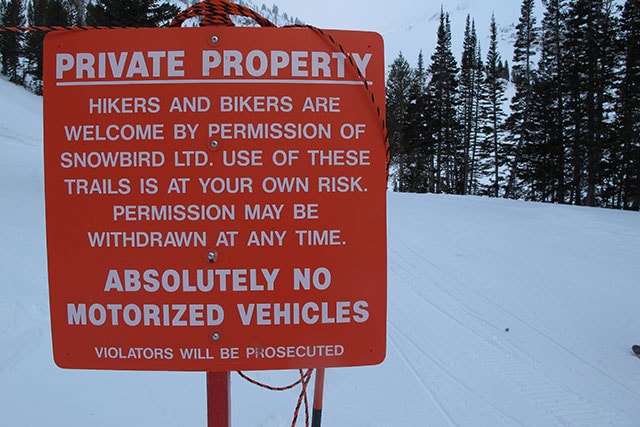
A sign of the times?
Get Out of Dodge
A common response to crowded backcountry areas is to go elsewhere, but oftentimes the crowded areas are crowded for good reasons: ease of access, quality of terrain, short approaches, and good snow. To paraphrase the late Yogi Berra, nobody goes to the backcountry anymore—it’s too crowded. It is easy to bitch about the good old days, but to the people who are just getting into the sport, seeing 100 skiers in the backcountry is the new normal, and no matter how crowded it gets, the backcountry will always seem solitary compared to the resorts. In urbanized backcountry areas, the crowds are here to stay, but hopefully the conflict is not.
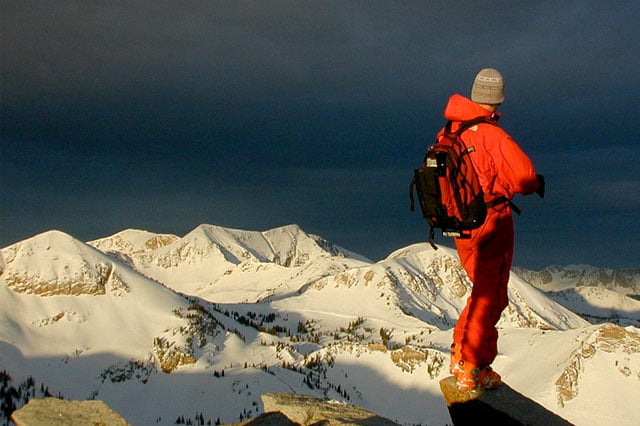
Contemplating the future of multi-use skiing terrain.









Back to Our Blog